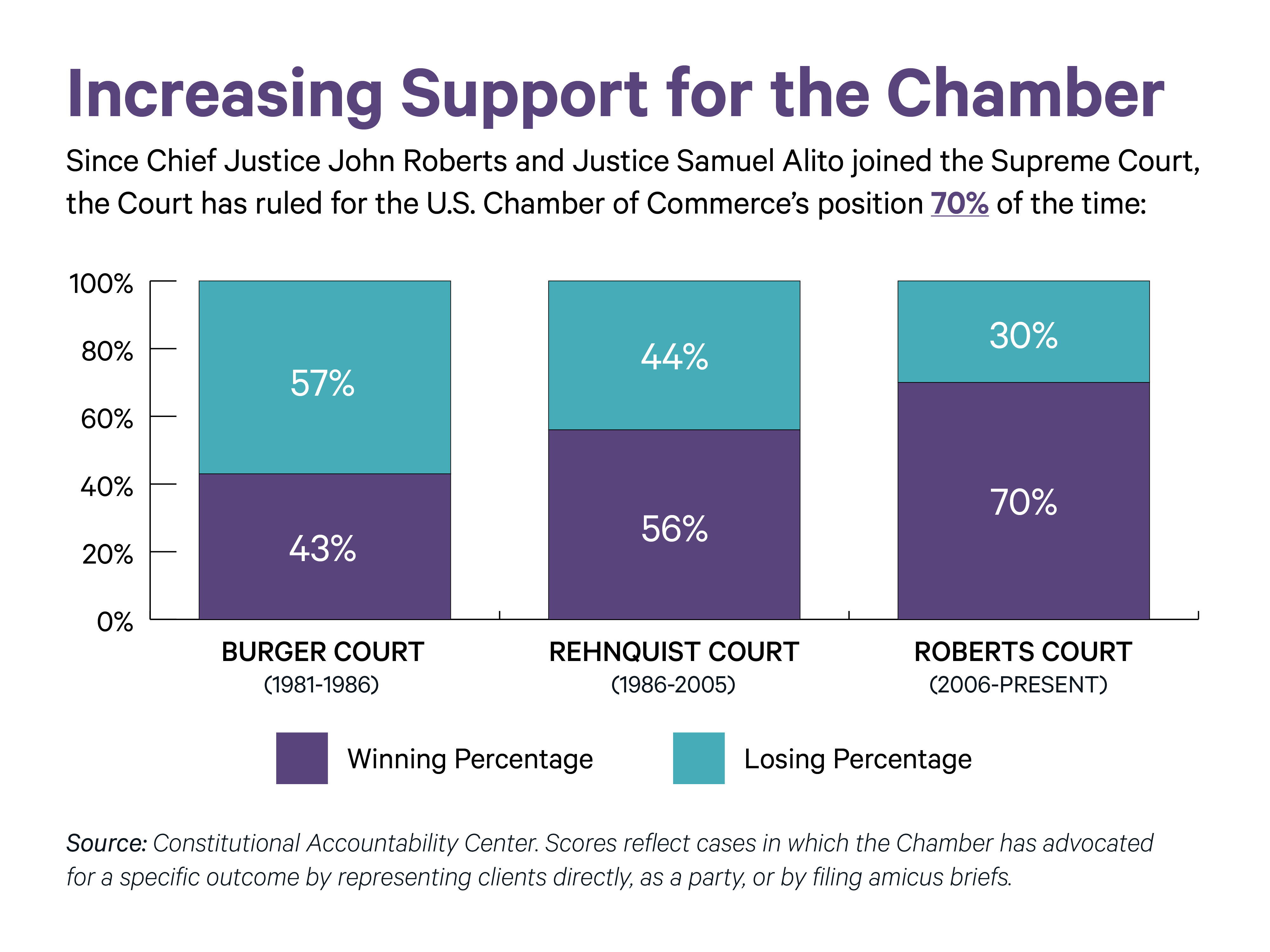Corporations and the Supreme Court
Since Chief Justice John Roberts and Justice Samuel Alito joined the Supreme Court in the 2005-2006 term, the Court has become increasingly friendly toward big business, often elevating the interests of corporations over those of individuals and ruling for the Chamber’s position 70% of the time.
Beginning with our first study in 2010, we have tracked this trend through our reports on the Chamber of Commerce and its record before the Roberts Court. Below are some of the highlights of our analyses, as well as up-to-date statistics on the Chamber’s win-loss rate during the Court’s latest term. Read our review of the 2023-2024 term here.
Current Term Overview (2023-2024 Term)
Chamber Wins
- City of Grants Pass v. Johnson
- Corner Post, Inc. v. Board of Governors of the Federal Reserve System
- Great Lakes Insurance SE v. Raiders Retreat Realty Co., LLC
- Loper Bright Enterprises v. Raimondo / Relentless v. Department of Commerce
- Macquarie Infrastructure Corp. v. Moab Partners, L.P.
- Moody v. NetChoice, LLC / NetChoice, LLC v. Paxton
- SEC v. Jarkesy
- Sheetz v. County of El Dorado
- Smith v. Spizzirri
- Starbucks Corp. v. McKinney
Chamber Losses
- Bissonnette v. LePage Bakeries Park St., LLC
- CFPB v. Community Financial Services Association of America, Limited
- Coinbase, Inc. v. Suski
- Connelly v. United States
- Harrington v. Purdue Pharma L.P.
- Moore v. United States
- Muldrow v. City of St. Louis
- Murray v. UBS Securities, LLC
- Office of the U.S. Trustee v. John Q. Hammons Fall 2006, LLC
- Warner Chappell Music, Inc. v. Nealy
Decisions Resulting in Neither a Win Nor a Loss
Cases Dismissed Without Decision
Long-Term Trends
CAC’s long-term analysis demonstrates the Chamber of Commerce’s increased rate of success before the Roberts Court, as well as the ideological divide among the Justices with respect to the Chamber’s positions.

